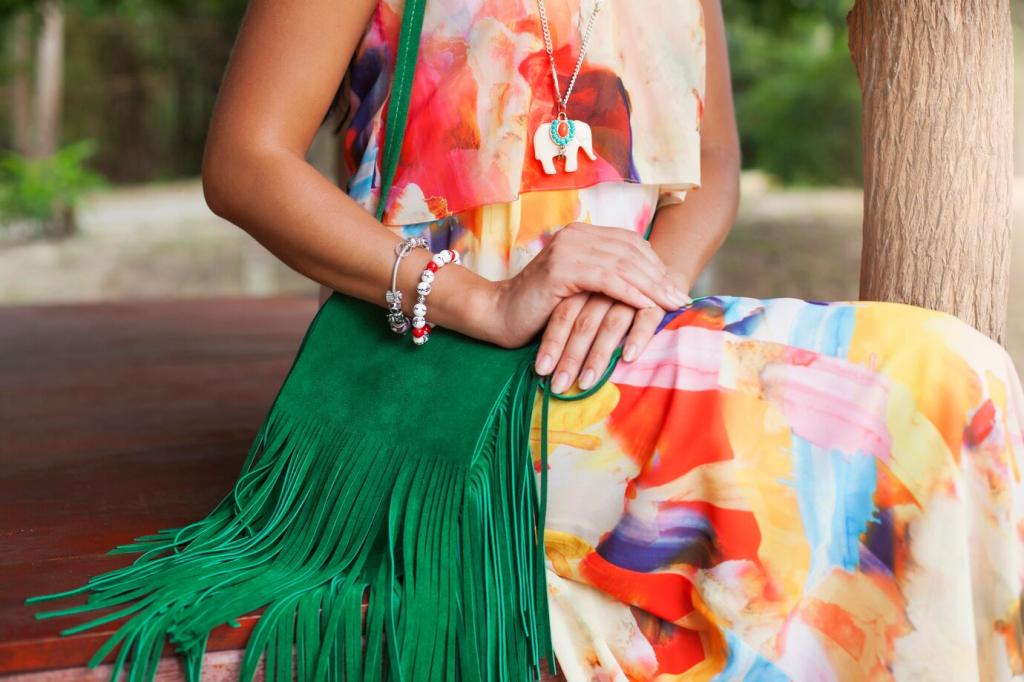Eco-Friendly Fabrics: Choosing Materials for a Sustainable Closet
Sustainable fashion is transforming the way we think about clothing, urging us to consider not just style and comfort, but also the environmental impact of our choices. One of the most critical aspects of building a greener wardrobe is understanding the fabrics our clothes are made from. Eco-friendly fabrics offer the promise of reduced carbon footprints, responsible sourcing, and long-term benefits for both people and the planet. Whether you’re a conscious consumer or just starting your sustainability journey, learning about eco-friendly materials can empower you to make positive changes in your closet and lifestyle.


Previous slide
Next slide

Organic Cotton: A Healthier Alternative
Organic cotton is cultivated without synthetic pesticides or fertilizers, leading to healthier soil, reduced water use, and improved biodiversity in farming regions. Unlike conventional cotton, growing organic cotton prioritizes the wellbeing of both the environment and farm workers, avoiding the exposure to toxic chemicals. For consumers, organic cotton garments feel soft, breathable, and hypoallergenic, making them ideal for sensitive skin and everyday wear. Supporting organic cotton also encourages farming communities to adopt more sustainable practices for future generations.
Hemp: Nature's Powerhouse Fiber
Hemp stands out as one of the most versatile and sustainable fabric options available. This fast-growing plant requires minimal water and no pesticides, thriving in diverse climates and replenishing the soil’s nutrients as it grows. Hemp fibers produce strong, durable textiles that soften with each wash while remaining resistant to mold and UV damage. Additionally, hemp crops sequester more carbon dioxide per acre than many other plants, enhancing their positive impact on the environment. The adoption of hemp fabrics is a significant step toward mainstream sustainable fashion.
Recycled Materials: Closing the Loop
Recycled fabrics, such as polyester from post-consumer plastic bottles or upcycled cotton, are transforming textile waste into new garments. By giving discarded materials a second life, these fabrics help to reduce landfill accumulation and the need for virgin resources. Innovative recycling technologies are making it possible for brands to turn recovered waste into high-quality, fashionable textiles. When consumers choose clothing made with recycled materials, they directly support circular economy principles and reduce the environmental footprint of their wardrobe.
Caring for Eco-Friendly Garments
Washing and Drying Sustainably
Eco-friendly fabrics often require gentler handling to maintain their texture, color, and integrity. Washing clothes in cold water conserves energy and helps preserve fibers, while using mild, biodegradable detergents safeguards natural materials and prevents harmful chemicals from entering water systems. Air drying garments instead of using a tumble dryer further cuts energy consumption and prevents premature wear and tear. Embracing these practices ensures that each piece of clothing remains in good condition while minimizing its ongoing environmental impact.
Extending Garment Lifespan through Repair and Upcycling
A crucial aspect of sustainability is maximizing the use of what you already own. Learning basic repair techniques, such as mending small rips or sewing on buttons, can breathe new life into worn garments. Upcycling—transforming old clothes into new items like bags, accessories, or even entirely new outfits—unlocks creative ways to refresh your wardrobe without purchasing more. By valuing repair and upcycling, you extend the lifespan of your clothes and contribute to a reduction in overall fashion waste.
Responsible Disposal at End of Life
When a garment is no longer wearable or suitable for upcycling, responsible disposal is essential. Donating usable clothing keeps items in circulation within the community, while fabric recycling programs ensure that even worn-out textiles are repurposed into new materials. Many municipalities and brands now offer textile recycling bins or mail-in schemes. By disposing of clothing responsibly, you complete the sustainability loop and prevent waste from ending up in crowded landfills, helping to protect the environment even at the end of your garment’s journey.
Join our mailing list
